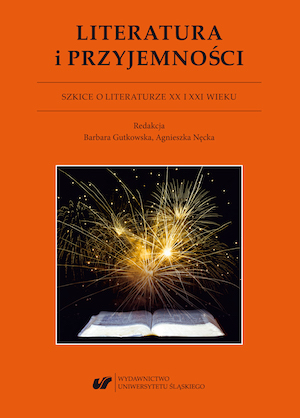

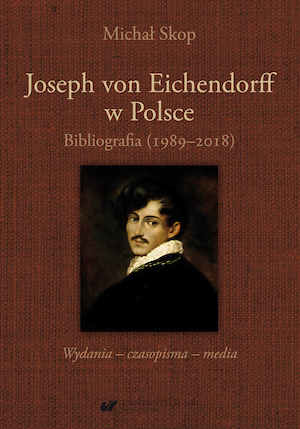
Keywords: Joseph von Eichendorff
This bibliography devoted to Joseph von Eichendorff (born in Łubowice near Racibórz) concerns the publishing and media activity in Poland between 1989−2018. The presented listings include book publications, journals, doctoral dissertations, ephemeral publications, as well as films, theater plays, festivals and other media activities. The volume is concluded with an essay on the reception of von Eichendorff ’s works in Silesian press post-1989.The monograph attempts to map Joseph von Eichendorff ’s place in the consciousness of critics, translators, literary scholars, historians, historians of literature, cultural studies scholars, folk studies scholars and ethnologists on the basis of collected articles, notes and reports from the Polish press. An attentive reader will find among the listings the names of German scholars as well as translations of their articles into Polish, published in Polish journals or collected volumes.The aim of this monograph has been to study the range of reception of the works of “the last knight of German Romanticism” in the last three decades. The user of this bibliography will notice not only numerous translations of Joseph von Eichendorff ’s poetry, but also other accomplishments of the translators of his poetry and prose. The most extensive chapter concerns texts published in yearly, quarterly, monthly, bimonthly, fortnightly and weekly journals, social and cultural journals, scholarly and popular science journals, trade journals as well as local periodical press published by the local government offices and municipal offices, associations and societies, and German minority associations. The listings entail poems published in the Polish translations, as well as articles, notes and reviews devoted to the selected aspects of Joseph von Eichendorff ’s creative work, written in Polish and German, but also in English, or even in Latin or the Silesian dialect.
More...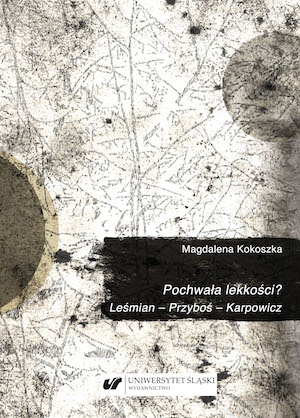
Keywords: lightness; weight; movement; Bolesław Leśmian; Julian Przyboś; Tymoteusz Karpowicz
The book contains texts devoted to writers who are familiar with the ambivalence of lightness and weight. These artists take a pen to seek a remedy for the burden of life, and above all to escape the inertia that is imparted to the word. The effort to overcome what weighs heavily, undertaken (with varying results) by the presented authors – Bolesław Leśmian, Julian Przyboś and Tymoteusz Karpowicz, is an expression of openness to what is multiple and variable, a specific praise of movement that liberates from tension, the movement which allows us to constantly immerse ourselves in vitality of life.
More...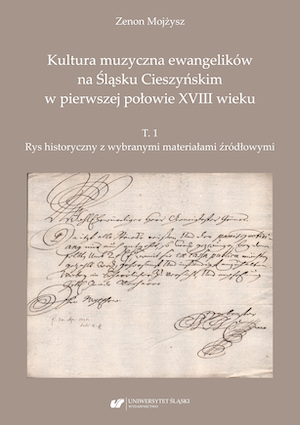
Keywords: music; baroque; Protestant; Lutheran; Silesia; Cieszyn (Teschen)
The discovery of unknown musical manuscripts in the archives of the Church of Jesus in Cieszyn (Teschen) in 2008 was an impulse to conduct comprehensive scientific research. In the light of these studies, the eighteenth-century Cieszyn appears to be one of the main centers of Protestant musical culture in Silesia, radiating throughout Upper Silesia and its neighboring regions.From 1710, despite many difficulties, Cieszyn cantors managed to create a thriving vocal and instrumental ensemble and provide a musical setting for celebrations and services at a high artistic level. The so-called "Cieszyn cantatas", the surviving works from the then repertoire, are living testimony to this fascinating chapter in the history of music.
More...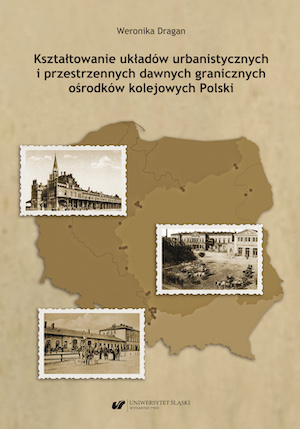
Keywords: border railway station; spatial layout; functional and spatial structure; spatial development; archival source
The spatial layouts of former border railway urbanized centers are presented from an interdisciplinary perspective referring to fields such as socio-economic geography, historical studies, urban planning, architecture, industry, migration, and cultural diversity. The monograph integrates historical studies of urbanized centers developed as a result of the influence of a railway station and state border with the problem of contemporary spatial development of the surroundings of such railway stations as cultural heritage. In addition, the book proposes a model and typological approach explaining the processes taking place in the studied urbanized centers.
More...
Monografia problemowa Kobiety – praca – podmiotowość. Refleksje socjologiczne jest adresowana do osób zainteresowanych kształtowaniem się podmiotowości kobiet na rynku pracy zawodowej i w życiu społecznym. Inspiracją opracowania było stulecie praw wyborczych kobiet w Polsce oraz grupa tematyczna zorganizowana przez Sławomirę Kamińską-Berezowską i Dominikę Polkowską w ramach XVII Ogólnopolskiego Zjazdu Socjologicznego „Ja My, Oni? Podmiotowość, tożsamość, przynależność” we Wrocławiu. Grupę zajmowały wyzwania i doświadczenia Polek po 100 latach od uzyskania praw wyborczych. W związku z tym autorzy monografii to przede wszystkim socjolodzy, którzy wzięli udział w XVII OZS we Wrocławiu, interesujący się podmiotowością kobiet w Polsce i sprawami ich doświadczeń zawodowych. Ostatecznie jednak, dla uzyskania pewnego dystansu w spojrzeniu na kwestie funkcjonowania społeczno-zawodowego kobiet w III RP, zdecydowano się zaprezentować także współczesne wyzwania związane z kobiecym dążeniem do podmiotowości w innych krajach.
More...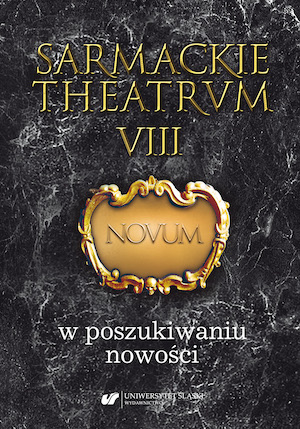
Keywords: novitas; topics; rhetoric; editing; manuscripts;old prints;
Kolejny, już ósmy tom Sarmackiego theatrum zbiera artykuły przygotowane jako wynik namysłu nad kategorią nowości w dawnej literaturze. W perspektywie retorycznej poszukiwano rozumienia istoty novitas i analizowano funkcjonowanie topiki. W ujęciach faktograficznych przedstawione zostały odkrycia utworów z XVII w. zachowanych w rękopisach i nieznanych drukach, sformułowano hipotezy na temat autorstwa i opisano stosowane przez twórców strategie perswazyjne. Poddano także oglądowi sposoby funkcjonowania nowości z punktu widzenia dawnego czytelnika i rynku wydawniczego.
More...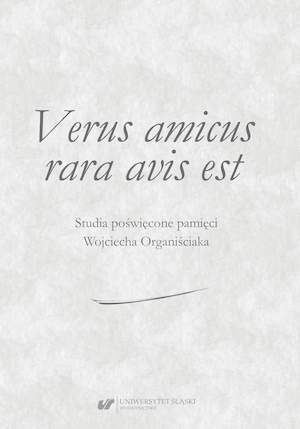
The memorial book comprises a collection of studies prepared by friends and colleagues ofProfessor Wojciech Organiściak, who passed away in 2018. The late Wojciech Organiściak was affiliatedwith the Chair of Law History at the Department of Law and Administration of the Universityof Silesia, a recognised expert in military law of the Polish-Lithuanian Commonwealth,a researcher in legal and political thought of the 18th century. He was also a judge at the VoivodeshipAdministrative Court in Gliwice.The book contains historical and historical-legal texts as well as studies on contemporary law.Many of the texts refer to scholarly interests and judicial practice of our prematurely deceasedColleague.
More...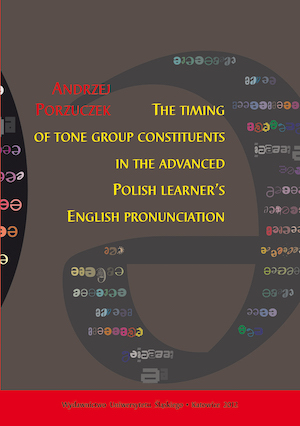
Keywords: EFL; wymowa; prozodia;rytm;
Książka Andrzeja Porzuczka poświęcona jest analizie relacji czasowych pomiędzy elementami frazy intonacyjnej w wymowie angielskiej zaawansowanego ucznia polskiego. Celem autora było wykazanie i opisanie różnic w tym zakresie między polskim uczniem a rodzimym użytkownikiem języka angielskiego oraz ich interpretacja w kontekście glottodydaktycznym.Część teoretyczna pracy (rozdziały 1—3) omawia historię i stan badań nad prozodią języka mówionego oraz metodologię akustycznych badań mowy. Część praktyczna natomiast (rozdziały 4—7) przedstawia oparte na dyskusji z części teoretycznej założenia metodologiczne, hipotezy badawcze oraz materiał językowy wybrany do analizy, po czym autor w sposób wyczerpujący prezentuje i omawia wyniki swoich badań.Autor zaobserwował m.in.: wyraźnie dłuższy czas trwania elementów nieakcentowanych w wymowie Polaków oraz większą u rodzimych użytkowników języka angielskiego tendencję do wyrównywania czasu trwanie stopy rytmicznej. Badania nie wykazały z kolei wyraźnych różnic w bezwzględnej długości samogłosek i sylab akcentowanych (z wyjątkiem sylab akcentowanych na końcu frazy, gdzie są one znacznie dłuższe w wymowie rodowitych Anglików).Przedstawione w pracy Andrzeja Porzuczka rezultaty badań oraz wykorzystanie zastosowanych w nich metod mogą posłużyć do identyfikacji konkretnych problemów w przyswajaniu obcej wymowy, jak również wprowadzić element obiektywizmu do zazwyczaj impresjonistycznej oceny warstwy prozodycznej wymowy języka obcego.
More...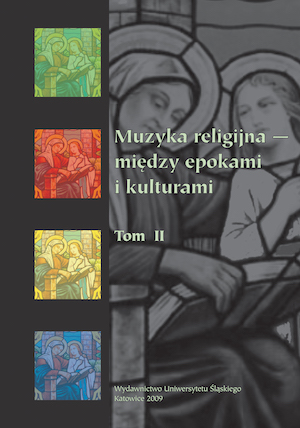
Keywords: dawna; pieśń religijna; współczesna; twórca; muzyka religijna; pieśń kościelna; życie muzyczne; zespoły muzyczne
Książka podejmuje zagadnienia muzyki religijnej, traktowanej z perspektyw: muzykologicznej, historycznej i folklorystycznej. Przynosi informacje o twórcach muzyki religijnej, o działalności zespołów ją wykonujących, analizuje wybrane przykłady religijnego repertuaru muzycznego. Dostarcza wiedzy na temat dawnej oraz współczesnej muzyki religijnej.Publikacja jest adresowana do muzykologów, amatorów muzyki, teologów, religioznawców, a także wszystkich zainteresowanych twórczością religijną.
More...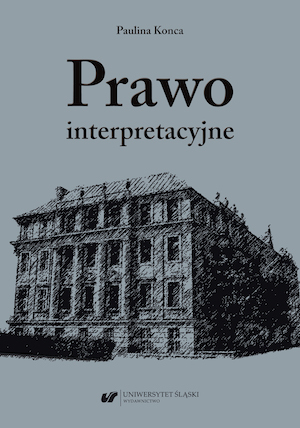
Keywords: interpretation; construction; law; legal theory; lawmaker; separation of powers
Although the interpretation of legal rules has a direct impact on the content of judicial decisions, law of interpretation has not yet been the subject of a monographic study in Polish legal theory. The author describes the status of interpretative directives in various legal cultures (e.g. Poland, Spain, Australia, USA, Great Britain, Ireland and Latin America) and analyses the problems caused by enacting interpretative directives. She puts forward proposals for the creation of the law of interpretation and analyses the nature of interpretative directives. An important advantage of the work is the reference to a wide range of literature and jurisprudence from many jurisdictions.
More...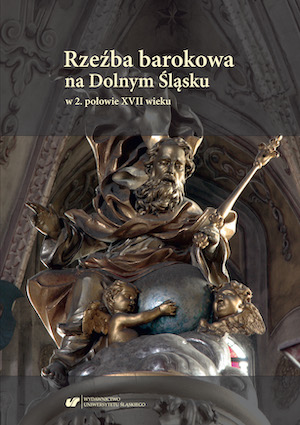
Keywords: baroque sculpture; small architecture; modern art; Silesian art; Central European art; Lower Silesia; Kingdom of Bohemia; Habsburg Monarchy
Zamieszczone w niniejszym tomie materiały stanowią pokłosie sesji naukowej: "Rzeźba na Śląsku w 2. połowie XVII w." zorganizowanej 20.01.2017. w Muzeum Miedzi w Legnicy. Przedsięwzięcie to miało szczególny charakter, bowiem rzeźba barokowa - potraktowana jako temat przewodni - rzadko staje się obiektem zainteresowań badawczych. Niniejsza książka nie pretenduje do prezentacji kompleksowych dziejów rzeźby na Śląsku na przestrzeni 2. połowy XVII w. Omawiane przez autorów zagadnienia dotyczą jednak obiektów, artystów, lub problemów pomijanych do tej pory, bądź słabo rozpoznanych, w istotnym stopniu uzupełniając i korygując stan badań, zawarty przede wszystkim w w wydanej przed ponad trzema dekadami syntezie rzeźby barokowej na Śląsku pióra prof. Konstantego Kalinowskiego. Śląsk - który w tym czasie wchodził w skład Monarchii Habsburskiej - pomimo peryferyjnego położenia względem Wiednia oraz Pragi poszczycić się może zabytkami rzeźby stojącymi na wysokim poziomie wykonania, łączącymi różnorodne inspiracje. Oprócz związków artystycznych z Czechami oraz Austrią działali tu również rzeźbiarze pochodzący, bądź posługujący się formami charakterystycznymi dla rzeźby południowoniemieckiej, morawskiej, flamandzkiej, czy francuskiej, czego owocem jest bogata mozaika artystyczna o szerokim spektrum stylowym. Znalazło się w niej miejsce dla nurtów klasycyzujących oraz dzieł antyklasycznych, w tym tzw. śląskiej maniery barokowej, silnie eksponującej walory ekspresyjne i zrośniętej z miejscową tradycją sztuki. Zjawiska artystyczne zapoczątkowane w rzeźbie śląskiej pomiędzy 1650, a 1700 r. miały swoją wspaniałą kulminację w 1. połowie XVIII w. Dokładniejsze rozpoznanie rzeźby siedemnastowiecznej - czemu służy także i ta publikacja - pozwala pełniej nakreślić kontekst dla erupcji ilościowej oraz jakościowej rzeźby, jakie miały miejsce na Śląsku około 1700 r.
More...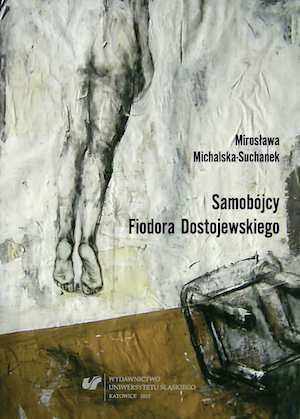
Keywords: Fyodor Dostoyevsky
Fyodor Dostoyevsky was the first eminent Russian thinker who began to view a suicidalact as one of the prominent ethic problems. He projected the results of doubtfulnessin God as well as the immortality of the soul by assuming that God does not exist, andman – gaining god’s rights – is elevated as the master of the entire world. Dostoyevsky’sworks unveil further visions of reality. They are all combined by a common finale – completedevaluation, which consistently and unavoidably leads to an annihilation of theworld in the social context, and to a malefaction and suicide – in individual one.Dostoyevsky created picture of suicides who accommodate themselves in the centerof the s u ic ide -ge nerat i ng spac e, which is read as an aggregate of the dynamicallyshaped circumstances and conditions that inevitably push an individual being towardself-annihilation – this entails a gradual unveiling of this person’s inner world. Thefinal act comes to be a fatal denouement of the whirl of interrelated acts, phenomena,events, attitudes, reactions, thoughts, etc. The suicide-generating space, weavingan immanent and a transcendent world together, is formed by the life choices of thesuicides all doomed to die. The suicide is therefore not the one who ends his or her lifehere and now, but, rather, an individual who is embedded in a dynamically emergingsuicide-generating space, and is thus experiencing mutual relationships with all itscomponents.A suicide in Dostoyevsky creates an independent entity that is rooted at the pointof intersection of three layers – that is, axiological, ontological, and psychological one.This person turns to be a semantic-ideal universum framed within his or her body. Thisuniversum is a reflection of a multifaceted, deepened reflection upon the real as wellas metaphysical world. Thus depicted, the protagonist focuses on and simultaneouslycondenses the intellective as well as extra-rational knowledge about the real world. Theprotagonist functions as a prism which sees into Dostoyevsky’s philosophy, mysteriesof human nature and soul revealed by him, as well as his reflections on the social andpolitical matters.The book comprises five parts – these are: Introduction, Russia in the mid-nineteenthcentury and the issue of the suicide; Types of suicides, Suicides in Dostoyevsky, and Suicides andtheir social contexts.The part entitled Russia in the mid-nineteenth century and the issue of the suicide is anattempt at looking into Russia in Dostoyevsky times, and its description through theprism of the semantic triangle, whose cusps are formed by Dostoyevsky himself alongwith the two notions: suicide and atheism. This part deals with the essence, form andspecial character of atheism, and aside from that, its sources and ramifications. Moreover,this part depicts other reasons for the intensified suicidal acts, as well as suicide inthe context of the religious history of Russia in the opinions of Russian eminent thinkers(Solovyov, Berdyaev), and Fyodor Dostoyevsky in the main.The part Types of suicides makes an attempt at classifying the personae of suicides whoappear in the works penned by the author of The Brothers Karamazov. The classification isbased on the concepts of types of suicides defined in terms of suicidology and psychology,as well as others, unaccepted in the studies on suicide, successfully serving as toolsof literary description. The book points to and provides characteristics of five categoriesof suicides – namely, calculating egotistic, logical, fatal, escapist, and spiritual one. Tothe categorization proposed in the book the author adds a typical suicidal model thatappears in Dostoyevsky.An extensive chapter Suicides in Dostoyevsky, which gives the title to the book, constitutesits main body. It comprises twelve separate sketches devoted to the leading suicidespenned by the writer (their order of appearance matches the chronology of the workswhere they appear). The purpose of the proposed analyses is to provide detailed insightsinto a gradual intensification of the suicide-generating space, an also attribute its componentswith semantic content. Furthermore, the analyses point to broadly understoodcontexts.Suicide is treated here as a medium which enlivens the truth about moral, spiritual,and social condition of Russia in the second half of the nineteenth century. Insofar asportrayals of prominent suicides convey messages that are ethically ennobling andarchetypical, the other suicides, who insinuate the ordinary and universal nature of thisphenomenon, perform the role of a looking-glass of the society. Therein hide all the mostessential problems of the nineteenth-century Russian reality. This problem is discussedin the part entitled Suicides and their social contexts that crowns the book.
More...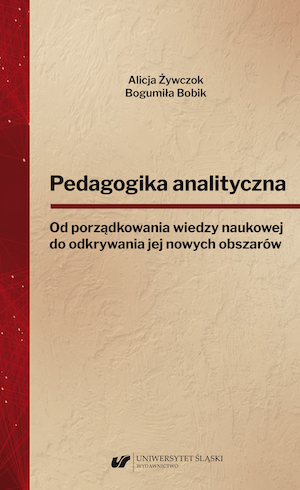
Keywords: classification; analysis; education (upbringing, training); analytical pedagogy; care; family
The monograph proposes viewing classification as not only a cognitive process that organizes knowledge, but also one that promotes the dynamic development of science: initiating new directions, concepts, branches of science, trends, sub-disciplines, etc. In structured knowledge it is easier to detect places yet unmarked in science. Thus the object of the presented research is the significance of ordering the scientific knowledge in the form of classification in the field of social sciences, in the discipline of pedagogy. Methodological resources of hermeneutics proved to be useful in analysis and interpretation of scientific source texts and official documents. The structure of the monograph consists of the table of contents, introduction, four chapters, conclusion, bibliography, list of diagrams and tables, personal index, summary and note about the authors.
More...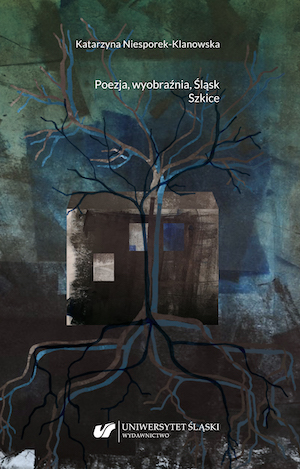
Keywords: poetry; word; imagination; Silesia; home; place
The book illustrates the poet's meeting with the reader and the poetic worlds they have created. It includes interpretations of poems written by artists biographically linked to Upper Silesia and the Dąbrowa Basin. They are connected not only by a common experience of place, but also by common themes: longing for the "little homeland", family peace, home (Florian Śmieja, Jan Darowski, Stanisław Horak, Tadeusz Różewicz), sincere expression of thoughts, emotions, de-sires, fears, disappointments over the most difficult matters (such as: homeland, politics, truth, woman) or attempts to tame death (Edward Zyman, Marian Kisiel, Jerzy Szymik), epiphany/metaphysics of words (Jerzy L. Woźniak, Tadeusz Sławek, Andrzej Szuba).
More...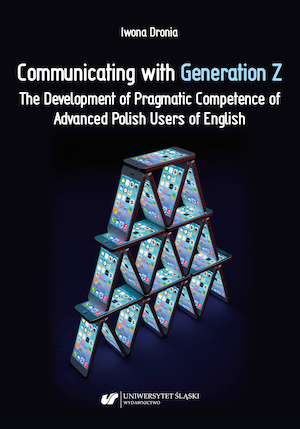
Keywords: pragmatic competence; Generation Z; cross-cultural communication; speech act of requesting; complimenting and apologising
This book intends to shed some light on the problem of second language communication from both cross-cultural and cross-generational angles and to diagnose communication patterns, opinions, and beliefs on the nature of L2 learning visible among the Generation Z group. Particular emphasis is placed on the development of pragmatic competence (pragmatic production and pragmatic comprehension). In order to assess the ILP development, it has been decided not only to evaluate the respondents’ language level but also their problems in communication. Diagnosing sociopragmatic competence as well as pragmalinguistic strategies implemented while performing three speech acts, that is, requesting, reacting to a compliment, and apologizing, allows one to indicate problematic areas and suggest some teaching implications, that in turn, will enable to introduce necessary changes and forms of work on the further development of English.
More...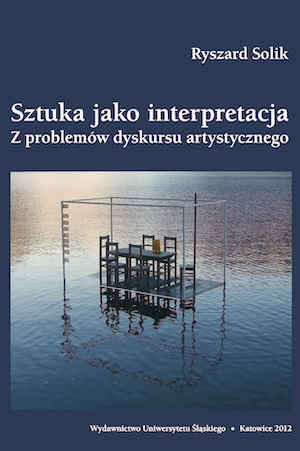
A standpoint presented in the book questioning an objectivist-essentialist understandingof a work of art typical of a formalist and modernist aesthetics. At thesame time, it criticizes autonomy, closeness and stable definition of an artistic production,and, independence from the context and receivers. “A myth of a work ofart for its own sake”, allegedly able to self-define its specificity and identity thanksto substantiality, was replaced with a perspective of contextual entanglements, inthe structure of which “artisticness” is being negotiated and construed, and notdefinitely defined and fixed. As a result, interpretative practices and discursiveprocedures constitute the centre of proposed considerations. This is a consequenceof the assumption that they constitute not only the context co-deciding about theexperience of art, but the substantial way of concretization of a work of art in thecultural reality. A constituting dimension of interpretation is thus connected withnot only the newest projects and enterprises, often of a “hesitant identity” requiringa comment and absorbing context resources, but an art as such, independently ofthe shape and type of its historical manifestations. Thus, art cannot exist for itsown sake, but only through its interpretations.
More...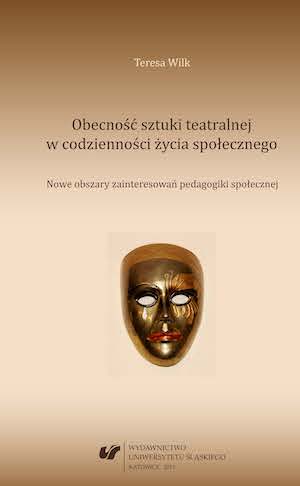
Keywords: Theatre Art; Social Pedagogy
The book shows the presence and engagement of theatre art in everydaysocial life. In order to display the constant presence of theatreand theatrical activities in everyday perspective, it presents – broadly –the constitution of theatre art, both in international space and inPoland. The orientation towards a widespread presence and availability oftheatre in every historical period became the incentive towards presentingits role in social practices in the context of social pedagogy. It is anattempt to present the possibilities of employing art in the area of pedagogicaltasks.Presenting the beginnings, the institutionalization and the developmentof theatre in different geographical regions in a historical perspectivesought to illustrate the constant presence of theatrical activities in thehistory of mankind.Based on source materials, it was purposeful to show that this artform developed from the specific needs of past generations as a form ofexpression, manifesting feelings, a method of communication, and a formof fulfilling the needs of recreation and leisure. With time, theatre fulfilledincreasingly larger social, educational, and emotional-aesthetic roles. Whileperforming those functions, it became an important instrument in socialpractices: processes of education and upbringing of the younger generations,shaping and experiencing reality, and finally – nurturing moral attitudesand values.It is worth remembering that from the very beginning, theatricalauthors and creators referenced everyday human existence in their texts,utilizing both positive attitudes, experiences and situations, as well as negative,problematic phenomena, which demonstrated frailties and flaws ofthe human nature.Modern dramatic arts substantiate that this topical inclination has notdrastically changed throughout the ages; only forms of presentation andmeans of expression have altered.The work particularly spotlights social-theatrical activities at this timeof transformation, and most of all – a time of numerous social conflicts,shortages, and existential and emotional problems. The specificity of theatre– of theatre art – and its permanent curiosity of the surroundingsocial reality caused the reciprocity (intermingling) of theatre and societyto become the norm. This in turn has and still does imply a range of tasksand functions theatre can and admittedly does serve for the society andwithin its boundaries.This current of activities includes classical, alternative, and amateurtroupes, showing that theater (even in its classical form) does not lose itsideas, formulas, and artistry, engaging itself in creating positive images, aswell as “correcting”/accentuating negative phenomena in everyday socialspace through its works, subject matter, form, and presentation venues.Thus, theatre art, as well as quasi-theatrical activities become a form ofprophylaxis and compensation, a basic task of social pedagogy.In summary, the contents of this work indicates that through established,basic artistic functions, but also social and educational ones, theatrecan and does become a partner for activities of social pedagogy.
More...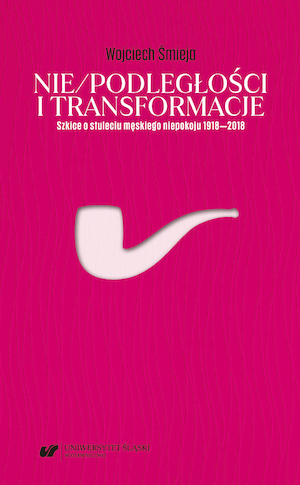
Keywords: Polish Literature; men; masculinities; gender; biopolitics
The work constitutes part of a lively current in contemporary humanities research — masculinity studies. In the theoretical chapter, the author introduces and maps the latest international research in this area. In the analytical chapters that follow, he demonstrates the possibility of using these methodologies in the area of domestic literary studies. Applying the new concepts discussed in the introduction to the analysis of literary texts enables the author to demonstrate the unconscious and often difficult-to-express tension that the unstable limitation of gender categories — not necessarily related to our “here and now,” but, as it turns out, quite common and transhistorical — introduces in the discussed texts. The analyses of selected works expose the tensions that are at first glance invisible, unnamed, but fundamental, thus opening up the field of further inquiry for subsequent researchers. All the discussed plots demonstrate how changes in political, social, cultural and economic conditions have modified the definition of what is “masculine” or “non-masculine,” and how the characters have confronted these changes, sometimes attempting adaptation, at other times contestation. Between the lines of these texts one can find uncertainty, anxiety and a desire to establish an (imagined) ontological foundation for the male gender, which, however, is lacking in the secularizing, fluid reality. Moreover, almost every one of these changes resonates in the male bodies.
More...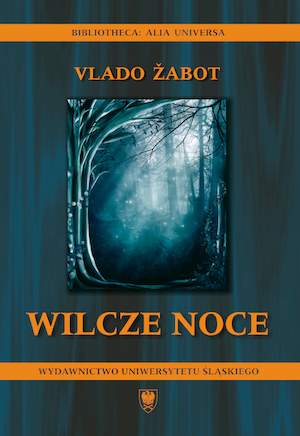
W powieści Wilcze noce dominuje semantyka nocy, zmierzchu, mgły, wiatru, korzeni, trzasków, szumów, błota, lepkości, śluzu, czerni, wody, próchna, gnicia — a wszystko to podkreśla płynność i niestałość kreowanych światów, przechodzących wielokrotne metamorfozy. Nie chodzi bowiem o zamkniętą przestrzeń iluzji, lecz o unaocznienie wpływu okolicy i ludzkich doświadczeń, pochodzących z różnych wymiarów czasowych, a stanowiących elementy, które składają się na doświadczenie mentalne człowieka. Ono określa tożsamość jednostkową. Autor jest bowiem przekonany, że w każdym jednostkowym losie skupia się doświadczenie kilku, co najmniej, generacji, zachowane w pamięci językowej i pamięci ciała.
More...